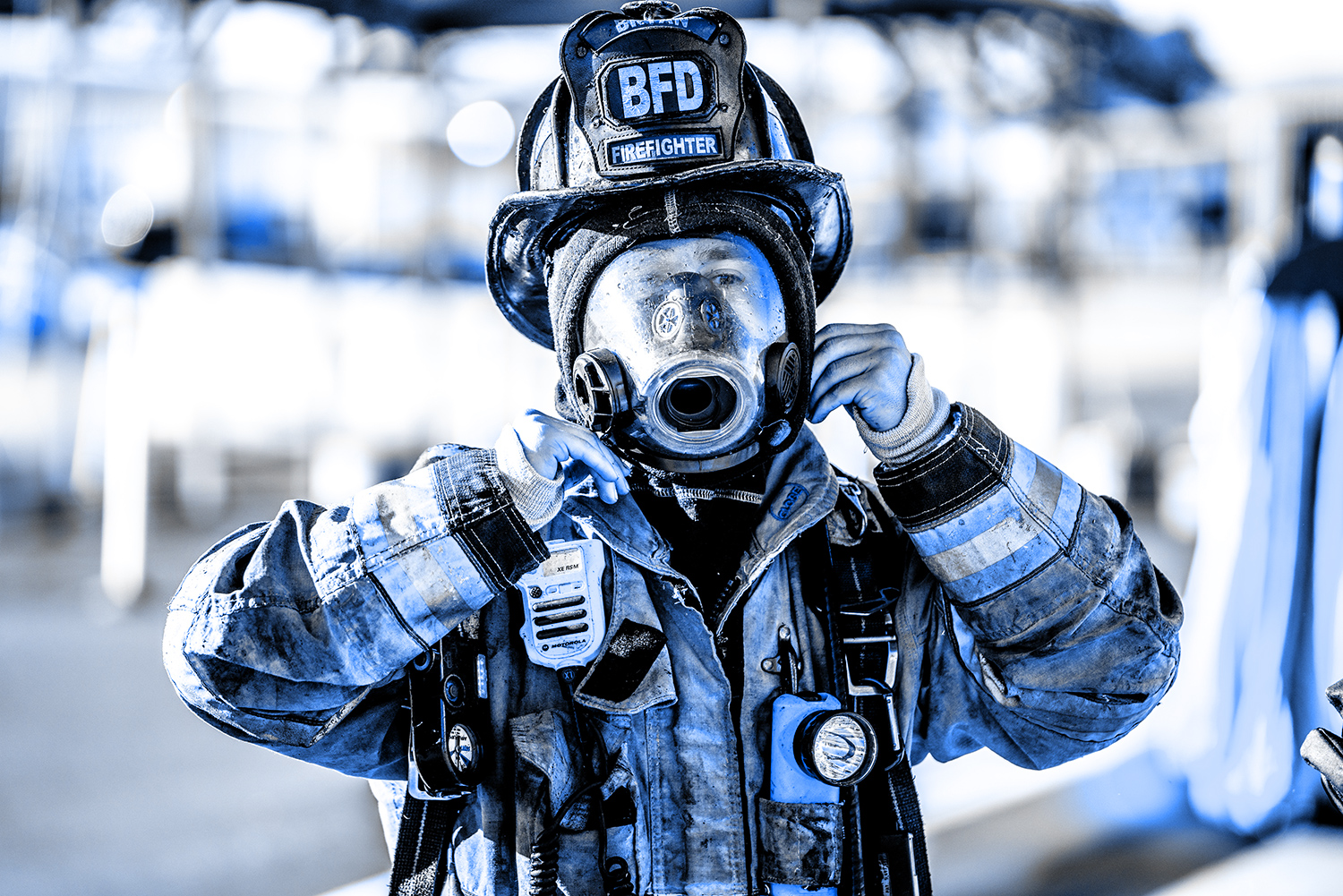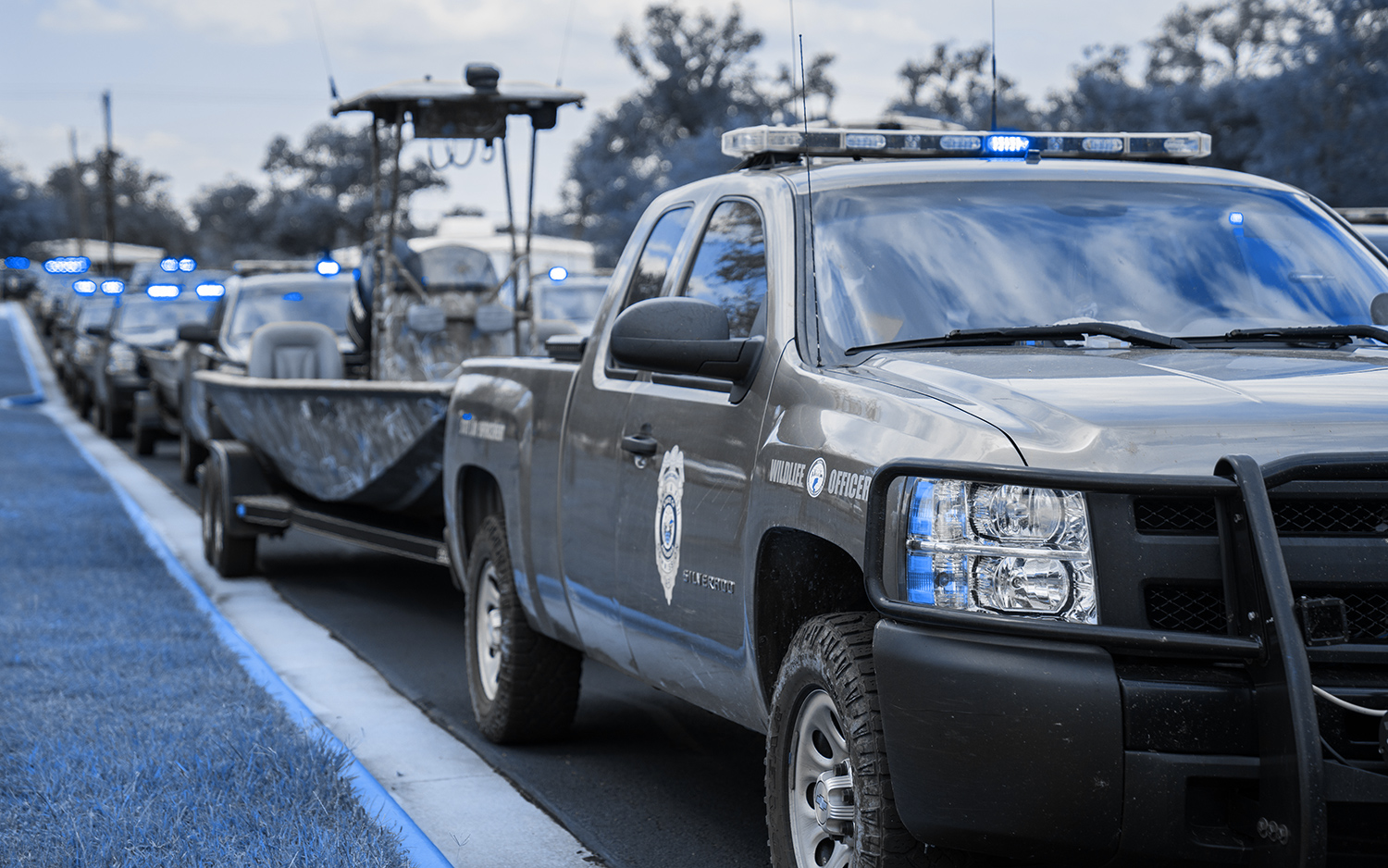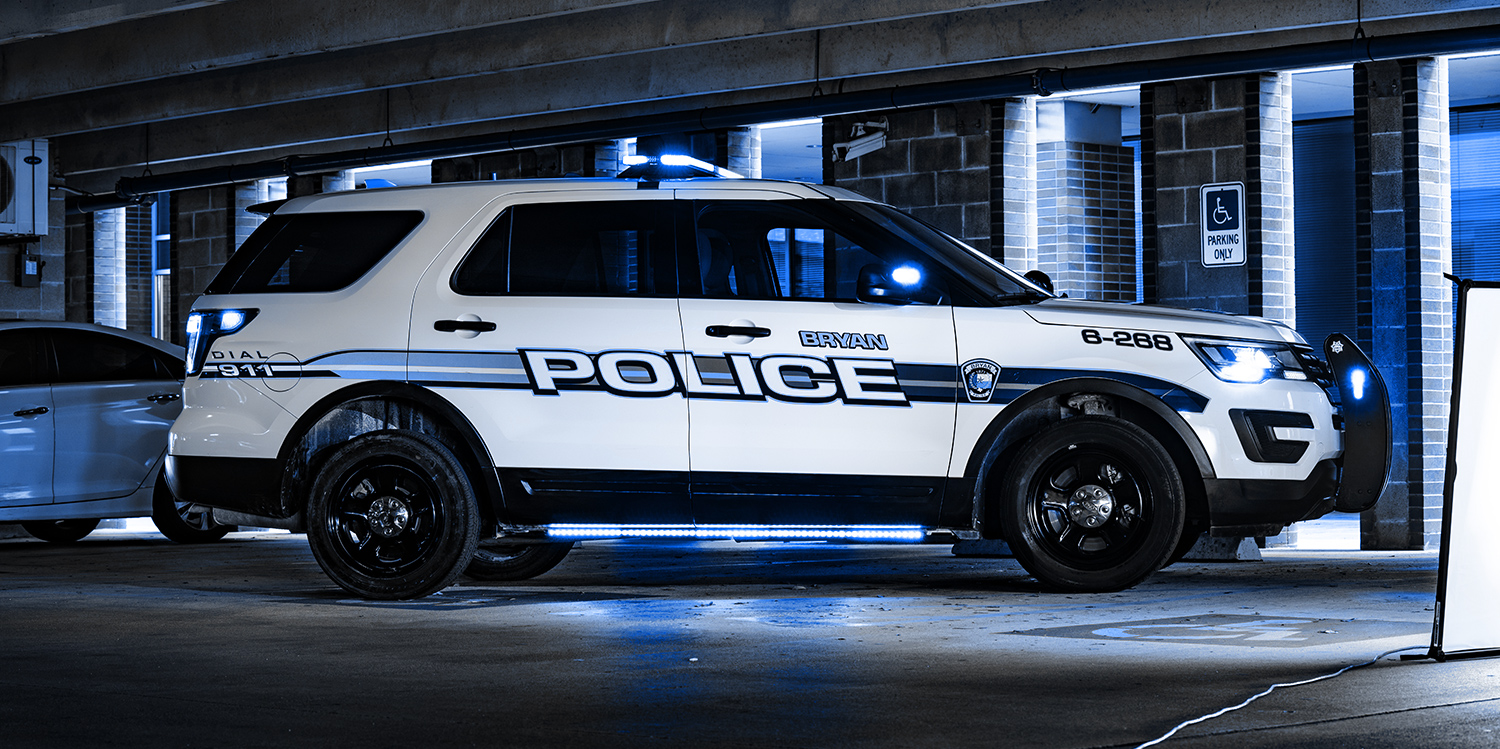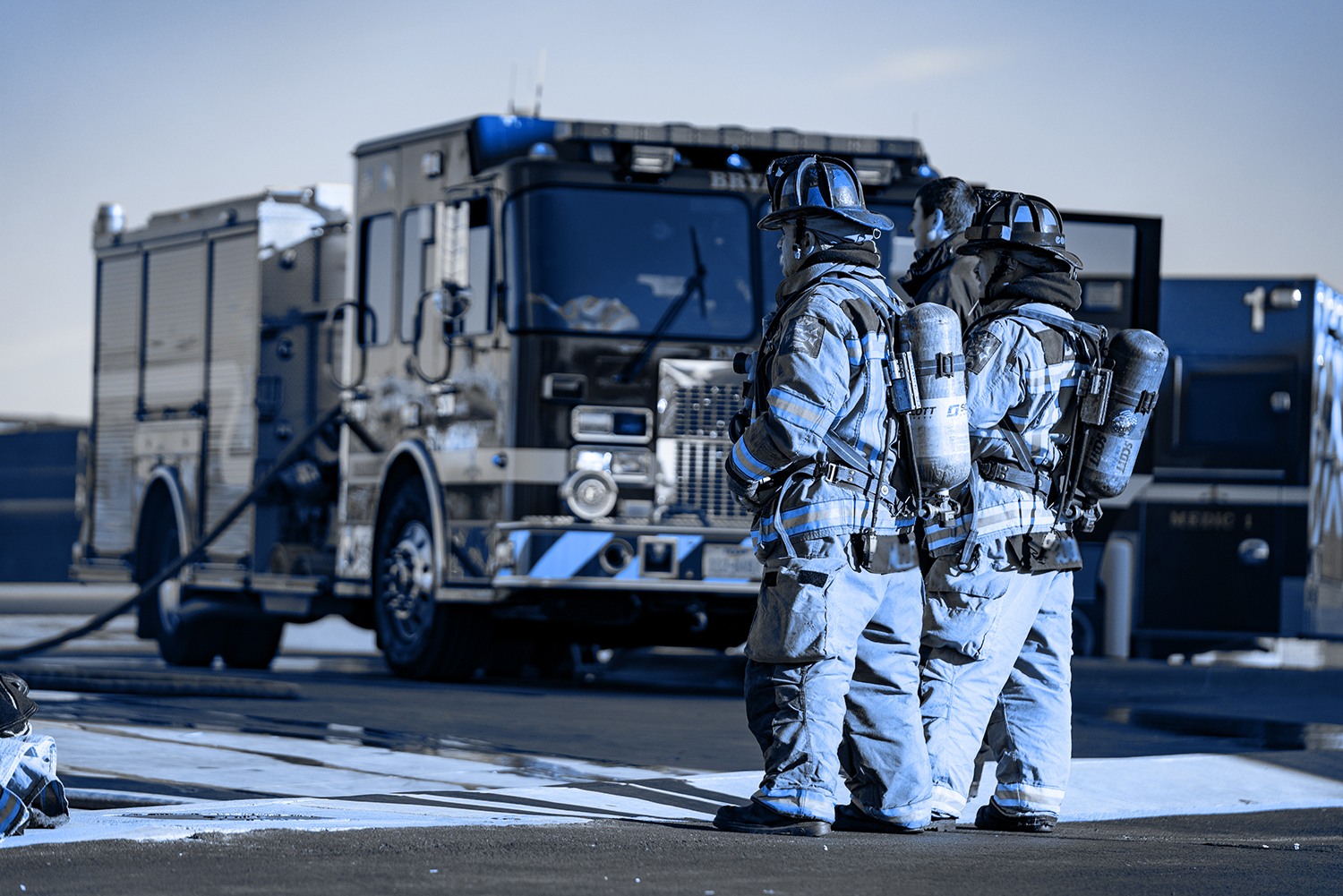The Brazos County Emergency Communications District was created in 1988 to provide Enhanced 9-1-1 (E911) emergency communications to the citizens of Brazos County. Our agency owns and operates the 9-1-1 network and infrastructure in Brazos County, which supports almost 100,000 9-1-1 calls at five answering points each year. We also operate a 24/7 multi-jurisdictional communications center and currently provide service for 13 local law enforcement and fire agencies in Brazos County.
The Board of Mangers of the Brazos County Emergency Communications District is comprised of 5 voting members and 1 non-voting member all serving two year terms. Here's a list of our current Board members and the entities they represent:

9-1-1 should be used ONLY in emergency situations. An emergency is any situation that requires immediate assistance from the police/sheriff, the fire department or an ambulance. If you are ever in doubt of whether a situation is an emergency you should call 9-1-1. It's better to be safe and let the 9-1-1 call taker determine if you need emergency assistance.
Never Prank Call 9-1-1
It's a prank call when someone calls 9-1-1 for a joke, or calls 9-1-1 and hangs up. If 9-1-1 lines or call takers are busy with prank calls, someone with a real emergency may not be able to get the help they need. In most places, it's against the law to make prank 9-1-1 calls.
Please use the following numbers to contact your local emergency services dispatch center:
Excellent benefits package.
Applicants will be selected for an interview based upon qualifications and past job stability.
We are NOT accepting applications at this time.
Click here if you would like to be notified when we begin the hiring process.
The Brazos County Emergency Communications District is an Equal Opportunity Employer. Questions? Please contact us via email at employment@bc911.org
Individuals interested in applying for the 911 Public Safety Telecommunicator position, must submit a Preliminary Application for Employment online. The Preliminary Application is available on this page only when the District is currently accepting applications.
Candidates must be successful in each phase of the selection process. Candidates may be eliminated or disqualified at any point in the process for failure to meet the criteria set forth by the District.
* A conditional offer of employment will have been made before these exams are administered.

The Brazos County 9-1-1 District is responsible for assigning physical addresses in the unincorporated areas of Brazos County. To obtain a new address, please contact Michael Reeves at (979) 779-0911 or mreeves@bc911.org.
If you need an address assigned in the City of Bryan, the City of College Station or surrounding counties, please contact the approriate agency or organization from the list below.
Master Street Address Guide (MSAG)
Use our comprehensive searchable database of street names and ranges in Brazos County.
Looking for a Map?
Access the City of Bryan's GIS Map Service
Seconds count in an emergency! When police, fire, or medical emergencies occur, 9-1-1 can save precious time. It can mean saving a home, property, or even a life. If you need immediate help from law enforcement, fire personnel and/or emergency medical services, 9-1-1 is the most important phone number to know and use.
More than 85% of all calls to 9-1-1 are made from cell phones. The Brazos County 9-1-1 District uses advanced call processing software and digital mapping to help locate wireless 9-1-1 callers. This equipment is capable of receiving and displaying wireless location data, including the wireless phone number and the caller's approximate location on a map. It is important for all citizens to remember that, although location technology has been implemented, callers must continue to provide as much location information as possible, so that 9-1-1 operators can better assist them.
Locating wireless callers to 9-1-1 is a major priority for public safety answering points across the nation. The Federal Communications Commission (FCC) created a mandate for PSAPs to have location mechanisms in place for locating wireless 9-1-1 callers.
Wireless Phase I: Wireless 9-1-1 service provides the 9-1-1 operator with the following information: telephone number of the wireless caller and the physical location of the cell tower which handled the 9-1-1 call.
Wireless Phase II: Wireless 9-1-1 service provides the 9-1-1 operator with the following information: telephone number of the wireless caller and the location of the 9-1-1 caller by latitude and longitude using either handset-based or network-based location technology.
Two different solutions for cell phone location technology have been implemented and the FCC provided wireless carriers with the option of using either solution.
In the handset solution, the global-positioning system (GPS) is in the telephone. In the network solution, location technology equipment is mounted on the carrier's cell towers. Both types of technology interface with the 9-1-1 system provided by the Brazos County 9-1-1 District.
Text to 9-1-1 is a new service that allows you to send a text message directly to 9-1-1 for help in an emergency. Texting 9-1-1 is no different than sending a normal text message. Just enter 911 into the recipient field, compose your message, and press send.
During an emergency, text 911 if you are unable to make a regular voice call. Texting is a good option if you are deaf or speech impaired or your safety would be compromised if you spoke out loud. This might include domestic violence, home invasions, or abductions.
Voice over Internet Protocol (VoIP) also called Internet, digital, broadband, or cable phone service is a rapidly growing alternative to traditional phone service. Its popularity is fueled by low prices, new features, and the consumer's ability to choose a phone number from nearly anywhere in the country (and sometimes, other countries). Many industry experts anticipate VoIP's growth will outpace the growth seen by the wireless industry in the last decade.
VoIP may look and appear to work like a traditional phone, but it connects to the internet and not a telephone line. There are several critical factors to consider regarding the impact of this service on your ability to call 9-1-1 in an emergency. While VoIP is an attractive option, it is important for consumers to understand the potential limitations the technology has with respect to accessing 9-1-1.
Request a Presentation
We would love to speak to your class or organization about 9-1-1. The number of public presentations may be limited and must be scheduled in advance.

*For agendas or meeting minutes prior to 2022, please contact us with the subject of your inquiry.
This could be the call that saves a life. Will you be answering your phone?
The Emergency Notification System was created to notify citizens of local emergencies that occur day or night. A new system has been implemented to more efficiently and effectively reach our citizens.
You may register your mobile device in one of two ways:
The advantage of a managed account is the ability to register multiple mobile devices and multiple addresses.
Weather alerts are automatically included in your registration, but you may opt out of those types of alerts during the registration process.
Please note: This county-wide system does not replace or modify the Texas A&M University Code Maroon system which specifically addresses on-campus emergencies. Click here for more information on Code Maroon.
What is the Emergency Notification System used for?
The emergency notification system is to advise you of any situation that could threaten harm to life and/or property or is deemed dangerous by officials. This may include, but is certainly not limited to inclement weather, man-made disasters, crime, hazardous materials incidents, missing persons, planned or unplanned utility outages, and road closures.
How does the system work?
Please note when you receive an emergency alert, a general community alert, or a weather alert from this system, there will be three different numbers used as noted below. We encourage you to save these in your phone for future reference. If you miss an alert, you can call back to hear a replay of that alert.
When you receive this important call, don't hang up. You will hear the following introduction before the alert:
"Attention, press any key or hold for an important message."
This system has been put in place to inform the public as quickly as possible whenever our community is in danger. The emergency notification system can be used to contact entire neighborhoods in minutes.
Can I specify the types of notifications I want to receive?
Yes! A managed account holder may opt-in to receive email, text, and/or phone call emergency alerts. You may also opt-in to receive special weather alerts for severe thunderstorms, tornado warnings, and/or flash floods.
What, if any, contact information do you already have in the Emergency Notification System for me?
The emergency notification system utilizes information obtained from the Emergency Service Listing (ESL) of E911 and includes all landline records (published/unpublished/listed/unlisted) for Frontier & CenturyLink customers.
Do I need to add my landline telephone number? What if my home phone number is unlisted?
The emergency notification system database includes all landline records (published / unpublished / listed/unlisted) for Frontier and CenturyLink customers. Even if your landline phone number changes, the database will be updated to reflect that change.
Those who have home phone service from other providers will need to add their information to the database by registering online. If your number changes, you will have to update it in the system.
What information am I expected to provide through the self-registration portal?
To register, you will be asked for your name, address(es), cell and/or VoIP phone numbers, and email address.
How do I know the information I provide through the self-registration portal will remain confidential
Rest assured, your contact information will remain confidential. It will never be sold or released for commercial purposes.
How will I know I am registered in the system before notifications are issued?
Once you complete and submit the registration form, you will receive a verification email from noreply@coderedweb.com. You must respond to the verification email to complete the registration process.
What if I don't received the verification email?
When using a personal email account (e.g., Yahoo, Hotmail, etc.), your provider may consider the verification email as spam. Check the "Spam" folder in your email account. If you find the message, simply right-click on it to set preferences for the "Sender" and indicate as "Not Spam."
What if my email address changes?
As a managed account holder, you may log into your account and update your email address.
What if my cell phone number changes?
Should any other part of your contact information change, such as your cell and/or VoIP phone numbers, please log into the Community Notification Enrollment (CNE) portal and update your information. There is no limit to the number of times you can change your information, and in fact, we urge you to do so as often as necessary.
Can I add more than one telephone number for my household?
Yes! You do have the ability to add multiple phone numbers, physical addresses, and/or email addresses for each managed account. Remember, in the event of an emergency, it will call all numbers listed if you are in the geographic area for the alert.
Will I get charged for airtime/data on my cell phone?
Yes! You will be charged the standard fee from your cell phone provider for receiving the emergency alerts. You are responsible for any charges that may be incurred as a result of receiving these alerts.
What is the purpose of the map on the Community Notification Enrollment (CNE) Portal screen?
After you enter your address, a pushpin will reflect your exact location on the map.
What if my address is not reflected accurately on the map? Can I fix this?
First, be sure you entered your address correctly. You may adjust your location by simply moving the pushpin found on the map. This is accomplished by left-clicking on the pin and moving your mouse to reflect your proper position.
Will I received an alert on my cell phone when I am out of town?
The address that you provide when registering will be linked to your cell phone number within the database. Therefore, if an alert is originated for your geographic area, you will receive the alert regardless of whether or not you are in town.
I plan to re-locate? How do I remove myself from the Emergency Notification System's database?
To be removed from the emergency notification system, please visit onsolve.com.
Is this the same as the Texas A&M Code Maroon system?
No. This system is a county-wide system that is used to notify citizens across Brazos County of significant emergencies anywhere in the community. The Texas A&M University Code Maroon System is used specifically for on-campus emergencies affecting the students, faculty, and staff of the university. For more information about the Code Maroon System, visit: codemaroon.tamu.edu.
Who do I contact if I have other questions?
Questions regarding the Community Notification Enrollment (CNE) may be directed to the Brazos Community Emergency Operations Center (CEOC) at (979) 821-1000 or via email at alerts@brazosceoc.org.
Help us help you!
If you would like to send information to help us locate you in an emergency, please complete the form using the link below.
Examples of helpful information to provide:
To make an open records request, please contact us at:
P.O. Box 911
Bryan, TX 77806
979-779-0911
Fax 979-821-3407
Chapter 176: Disclosure of Certain Relationships with Local Government Officers; Providing Public Access to Certain Information
§ 176.001. Definitions
In this chapter:
(1) "Commission" means the Texas Ethics Commission.
(2) "Family member" means a person related to another person within the first degree by consanguinity or affinity, as described by Subchapter B, Chapter 573, Government Code.
(3) "Local governmental entity" means a county, municipality, school district, junior college district, or other political subdivision of this state or a local government corporation, board, commission, district, or authority to which a member is appointed by the commissioners court of a county, the mayor of a municipality, or the governing body of a municipality. The term does not include an association, corporation, or organization of governmental entities organized to provide to its members education, assistance, products, or services or to represent its members before the legislative, administrative, or judicial branches of the state or federal government.
(4) "Local government officer" means:
(A) a member of the governing body of a local governmental entity; or
(B) a director, superintendent, administrator, president, or other person designated as the executive officer of the local governmental entity.
(5) "Records administrator" means the director, county clerk, municipal secretary, superintendent, or other person responsible for maintaining the records of the local governmental entity.
§ 176.002. Applicability to Certain Vendors and Other Persons
(a) This chapter applies to a person who:
(1) contracts or seeks to contract for the sale or purchase of property, goods, or services with a local governmental entity; or
(2) is an agent of a person described by Subdivision (1) in the person's business with a local governmental entity.
(b) A person is not subject to the disclosure requirements of this chapter if the person is:
(1) a state, a political subdivision of a state, the federal government, or a foreign government; or
(2) an employee of an entity described by Subdivision (1), acting in the employee's official capacity.
§ 176.003. Conflicts Disclosure Statement Required
(a) A local government officer shall file a conflicts disclosure statement with respect to a person described by Section 176.002(a) if:
(1) the person has contracted with the local governmental entity or the local governmental entity is considering doing business with the person; and
(2) the person:
(A) has an employment or other business relationship with the local government officer or a family member of the officer that results in the officer or family member receiving taxable income; or
(B) has given to the local government officer or a family member of the officer one or more gifts, other than gifts of food, lodging, transportation, or entertainment accepted as a guest, that have an aggregate value of more than $250 in the 12-month period preceding the date the officer becomes aware that:
(i) a contract described by Subdivision (1) has been executed; or
(ii) the local governmental entity is considering doing business with the person.
(b) A local government officer shall file the conflicts disclosure statement with the records administrator of the local governmental entity not later than 5 p.m. on the seventh business day after the date on which the officer becomes aware of the facts that require the filing of the statement under Subsection (a).
(c) A local government officer commits an offense if the officer knowingly violates this section. An offense under this subsection is a Class C misdemeanor.
(d) It is a defense to prosecution under Subsection (c) that the person filed the required conflicts disclosure statement not later than the seventh business day after the date the person received notice of the violation.
§ 176.004. Contents of Disclosure Statement
The commission shall adopt the conflicts disclosure statement for local government officers. The conflicts disclosure statement must include:
(1) a requirement that each local government officer disclose:
(A) an employment or other business relationship described by Section 176.003(a), including the nature and extent of the relationship; and
(B) gifts received by the local government officer and any family member of the officer from a person described by Section 176.002(a) during the 12-month period described by Section 176.003(a)(2)(B) if the aggregate value of the gifts from that person exceed $250;
(2) an acknowledgment from the local government officer that:
(A) the disclosure applies to each family member of the officer; and
(B) the statement covers the 12-month period described by Section 176.003(a)(2)(B); and
(3) the signature of the local government officer acknowledging that the statement is made under oath under penalty of perjury.
§ 176.005. Application to Certain Employees
(a) The local governmental entity may extend the requirements of Sections 176.003 and 176.004 to all or a group of the employees of the local governmental entity.
(b) A local governmental entity may reprimand, suspend, or terminate the employment of an employee who fails to comply with a requirement adopted under this section.
(c) An employee of a local governmental entity commits an offense if the employee knowingly violates requirements imposed under this section. An offense under this subsection is a Class C misdemeanor.
(d) It is a defense to prosecution under Subsection (c) that the person filed the required conflicts disclosure statement not later than the seventh business day after the date the person received notice of the violation.
§ 176.006. Disclosure Requirements for Vendors and Other Persons; Questionnaire
(a) A person described by Section 176.002(a) shall file a completed conflict of interest questionnaire with the appropriate records administrator not later than the seventh business day after the date that the person:
(1) begins contract discussions or negotiations with the local governmental entity; or
(2) submits to the local governmental entity an application, response to a request for proposals or bids, correspondence, or another writing related to a potential agreement with the local governmental entity.
(b) The commission shall adopt a conflict of interest questionnaire for use under this section that requires disclosure of a person's affiliations or business relationships that might cause a conflict of interest with a local governmental entity.
(c) The questionnaire adopted under Subsection (b) must require, for the local governmental entity with respect to which the questionnaire is filed, that the person filing the questionnaire:
(1) describe each affiliation or business relationship the person has with each local government officer of the local governmental entity;
(2) identify each affiliation or business relationship described by Subdivision (1) with respect to which the local government officer receives, or is likely to receive, taxable income from the person filing the questionnaire;
(3) identify each affiliation or business relationship described by Subdivision (1) with respect to which the person filing the questionnaire receives, or is likely to receive, taxable income that:
(A) is received from, or at the direction of, a local government officer of the local governmental entity; and
(B) is not received from the local governmental entity;
(4) describe each affiliation or business relationship with a corporation or other business entity with respect to which a local government officer of the local governmental entity:
(A) serves as an officer or director; or
(B) holds an ownership interest of 10 percent or more;
(5) describe each affiliation or business relationship with an employee or contractor of the local governmental entity who makes recommendations to a local government officer of the local governmental entity with respect to the expenditure of money;
(6) describe each affiliation or business relationship with a person who:
(A) is a local government officer; and
(B) appoints or employs a local government officer of the local governmental entity that is the subject of the questionnaire; and
(7) describe any other affiliation or business relationship that might cause a conflict of interest.
(d) A person described by Subsection (a) shall file an updated completed questionnaire with the appropriate records administrator not later than:
(1) September 1 of each year in which an activity described by Subsection (a) is pending; and
(2) the seventh business day after the date of an event that would make a statement in the questionnaire incomplete or inaccurate.
(e) A person is not required to file an updated completed questionnaire under Subsection (d)(1) in a year if the person has filed a questionnaire under Subsection (c) or (d)(2) on or after June 1, but before September 1, of that year.
(f) A person commits an offense if the person violates this section. An offense under this subsection is a Class C misdemeanor.
(g) It is a defense to prosecution under Subsection (f) that the person filed the required questionnaire not later than the seventh business day after the date the person received notice of the violation.
§ 176.007. List of Government Officers
The records administrator for a local governmental entity shall maintain a list of local government officers of the entity and shall make that list available to the public and any person who may be required to file a questionnaire under Section 176.006.
§ 176.008. Electronic Filing
The requirements of this chapter, including signature requirements, may be satisfied by electronic filing in a form approved by the commission.
§ 176.009. Posting on Internet
(a) A local governmental entity shall provide access to the statements and questionnaires filed under this chapter on the Internet website maintained by the local governmental entity.
(b) This subsection applies only to a county with a population of 800,000 or more or a municipality with a population of 500,000 or more. A county or municipality shall provide, on the Internet website maintained by the county or municipality, access to each report of political contributions and expenditures filed under Chapter 254, Election Code, by a member of the commissioners court of the county or the governing body of the municipality in relation to that office as soon as practicable after the officer files the report.
§ 176.010. Requirements Cumulative
The requirements of this chapter are in addition to any other disclosure required by law.

- Mailing Address:
P.O. Box 911
Bryan, TX 77806
- Phone: 979-779-0911
- Fax: 979-821-3407
- Patrick Corley, Executive Director | pcorley@bc911.org
- Laura Blackburn, Associate Director | lblackburn@bc911.org
- Kris Fox, Communications Manager | kfox@bc911.org